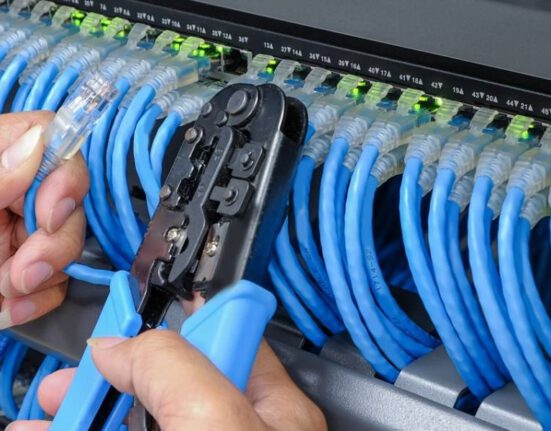Ethernet is a family of wired computer networking technologies. It is commonly used in local, wide, and metropolitan area networks. It was first commercially introduced in the 1980s and standardized in 1983 as IEEE 802.3. The Ethernet standard is widely used, and is the most popular method for creating and connecting local and wide area networks. Ethernet is an easy-to-use technology that allows you to connect two or more computers in a single network. In addition to its many advantages, Ethernet is also cost-effective and easy to install.
Ethernet can be used in almost any environment. Its ability to support the same protocol in LAN and WAN networks makes it a great choice for internet applications, private company networks, and data centers. It can handle the most complex networking challenges. It was also one of the first standards to be universally available. Ethernet continues to be one of the most popular technologies in the world, and is still the standard of choice for companies large and small. In fact, it is widely used for all types of business and personal computing environments.
The speed of Ethernet has increased over the years, from a few Mbps to 100 Mbps. The term gigabit Ethernet, under the IEEE 802.3 standard, was first used for high-performance servers, but it has become available for desktop connections as well. Because Ethernet is an open protocol, it is compatible with a wide range of hardware and software. Gigabit Ethernet supports high-speed networks and is widely used in office networks. Ethernet is also a great choice for connecting multiple devices, from servers to routers.
Once you have a network in place, you can connect to it with an Ethernet cable. The cable should connect to a large telephone jack. Push the connector into the port until it clicks. If the cable connects, a green light should appear. If the signal is strong enough, then the Ethernet is active and you can continue working. If not, disconnect the cable by pushing the top tab on the cable connector. Ethernet is an excellent choice for home networks and small businesses alike.
A packet is the smallest unit of data that an Ethernet device can send to another device. It contains the destination web address, sender, and other information. It then travels through the network until it reaches the bottom layer, or Ethernet frame. Each layer is composed of different types of information that can be sent to and received by a device. If a packet is not received in a single layer, it will be lost at the next layer.
Because Ethernet uses a tethered cable, it is more stable than Wi-Fi. The range of Wi-Fi is much larger than that of an Ethernet cable. Ethernet also tends to be bulkier than wireless networks. In fact, a phone would need to be 10 centimeters thick to support an Ethernet connection. And the cost is higher, too. It is also difficult to troubleshoot in the event of a network crash or other issues.
Industrial Ethernet systems are more robust than office Ethernet. Ethernet systems need to be more resilient, able to handle noise and other conditions that are unique to an industrial setting. Industrial Ethernet systems are needed for processes that involve constant data transfer. This is why they require different types of cables and connectors. For example, industrial settings require stronger lock mechanisms and sealed connectors. This ensures that data transmissions are uninterrupted and secure. This makes industrial Ethernet an excellent choice for demanding applications.
There are several different types of Ethernet cables, and you’ll need to choose the one best suited for your needs. ThioJoe, a YouTube technology explainer with over 2.4 million subscribers, offers a quick explanation of the different types. You’ll also learn more about Ethernet cables with his guide. This will make you much more confident in choosing the right cable for your network. It will make the whole process easier and less expensive.
Ethernet is a family of wired computer networking technologies, and is commonly used in local, metropolitan, and wide area networks. It was first standardized in 1983 by IEEE and was commercially introduced in the 1980s. It has been the de facto standard for computer networking ever since. Although the protocol is decades old, it still manages to incorporate many new technological innovations without losing its backward compatibility. With the widespread use of Ethernet, you can bet that it’s a good choice for your computer.








Leave feedback about this